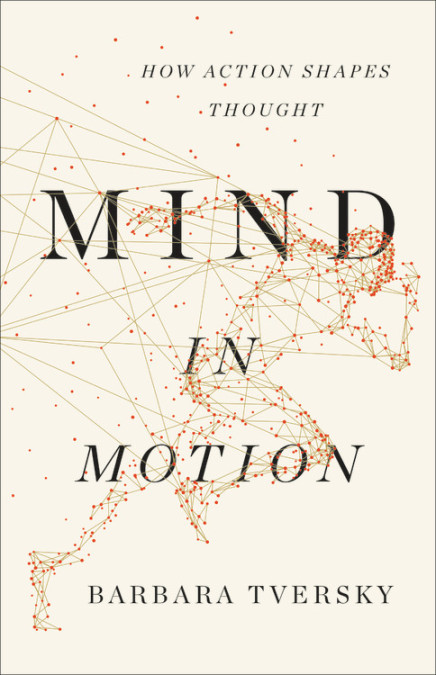Mind in Motion: How Action Shapes Thought, the book recently published by Barbara Tversky, Professor of Psychology & Education, continues to garner attention from major reviewers. Now The Wall Street Journal (subscription required) has joined the chorus with this paraphrasing of the book's main takeaway: "The fact that our brains are in bodies shapes how they think. We are cognitive animals, not merely soggy computers." Read a story on other responses to the book, published to the TC web in July, below.

What are our thoughts really made of?
That’s the central question posed by Barbara Tversky, Professor of Psychology & Education, in Mind in Motion: How Action Shapes Thought (published by Basic Books in May).
The answer isn’t “words.” Drawing together evidence from neuroscience, behavior, language and designs in the world, both ancient and modern, Tversky argues that spatial cognition is foundational to all thought, enabling human beings to draw meaning from their bodies, their surroundings, and their actions in the world. In fact, Tversky makes a strong case that acting in space underlies the structure and meaning of language as well as reasoning in the sciences, arts, and design.
Written for the scientifically curious but lay reader (if you’re a fan of Oliver Sacks, Daniel Kahneman, and Steven Pinker, this book is for you), Mind in Motion is winning its author considerable attention and high praise.
“In this fascinating, many-faceted, research-based study…moving from the ‘world in the mind’ to the ‘mind in the world’, Tversky explores myriad aspects of embodied cognition and spatial thinking,” writes Barbara Kiser in the June 5th issue of Nature. Those aspects include “how we experience the ‘bubble around us’, express thought through gesture, perceive ideas as concrete realities in the mind’s eye and represent aspects of the world (space, time, causality) through objects as varied as sundials and diagrams.”

CALL TO ACTION Tversky argues that “Gesture has a large role in guiding and teaching" and spotlights the importance of neural mechanisms such as mirror cells. (Photo: TC Archives)
In May, Jacob Gots, host of the radio show “Think Again,” said that Tversky’s book “upends everything most of us think we know about thinking” – a billing that Tversky more than lives up to in her interviews with Gots and others.
“Half the cortex is involved with thinking about space in some way,” Tversky said in an interview with Jake Taylor, host of the podcast “Five Good Questions.” “Language is a brutal and blunt instrument, not nearly as precise as thinking with the body.”
She draws on a wealth of fascinating evidence from her book to support that claim: Einstein, imagining himself traveling in space; the split-second reactions of athletes; and even babies and animals, who are “doing quite sophisticated thinking without any language,” Tversky tells Stephanie Bastek, host of “Smarty Pants,” the podcast series of American Scholar magazine. “We understand other people’s intentions by the way they move their eyes, their shoulders and hands, and infer very quickly what they are intending to do.” At all of these levels, she adds, “we’re really thinking through actions in space and using those to think abstractly.”
Half the cortex is involved with thinking about space in some way. Language is a brutal and blunt instrument, not nearly as precise as thinking with the body.
—Barbara Tversky, on “Five Good Questions.”
And humans aren’t the only species whose brains work this way. In Mind in Motion, Tversky also writes about mirror neurons – brain cells first discovered in monkeys. As Tversky tells Krys Boyd, host of “Think” on KERA public radio in Dallas, these cells, which fire when, say, a monkey throws something, also fire when the monkey observes another monkey (or human being) make the same motion.
Yet spatial thinking remains neglected in education – and if there is a call to action in Mind in Motion, it is to change that picture.
Tversky spotlights the power of diagrams, notation systems, visualizations, graphs, graphic interfaces, drawing, and even comic books to facilitate learning, design, and creativity, because these visual tools communicate more directly than symbolic words. Perhaps most of all, she writes, “Gesture has a large role in guiding and teaching…The naming game with babies itself depends on joint attention and gesture, pointing, if not by the hand, by the eyes. There’s so much more to say, but that would be another book.”
Check out additional interviews with Barbara Tversky about Mind in Motion on Science Salon, the podcast series of Skeptic magazine, hosted by Michael Shermer, and Edge (and stay tuned for others that are scheduled; and read “What Makes a Map Good,” an excerpt from Mind in Motion on the site Medium.